Table of Contents
Omnichannel marketing is becoming increasingly popular among businesses looking to better serve their customers. Through a variety of client touchpoints, this type of marketing helps move customers closer to making a purchase, regardless of what device they’re using or where they are in the shop. Omnichannel is the approach to employ in a world when customers have access to several devices and expect service right now.
Sales are up for businesses that use omnichannel marketing. They focus on the consumer and offer a consistent user experience. You succeed when you put the needs of the client first.
To begin, let’s talk about what omnichannel marketing is and how it may benefit your business.
What is Omnichannel Marketing?
As the name implies, omnichannel marketing is the practice of distributing a brand’s message through all available channels. It’s no longer possible to separate your company’s advertising from its customer service. Your print marketing and social media platforms should work together. Client service and sales emails both help you increase customer satisfaction. No matter the channel your consumer uses to contact you, you establish a uniform and smooth brand experience.
Benefits of Omnichannel Marketing?
Considering using omnichannel marketing for your company, but unsure if it would be effective? The advantages of using an omnichannel strategy will be discussed in this section.
- Recognize the preferences of the target audience
- Improve the level of happiness with your customers
- Boost the level of client satisfaction and loyalty.
- Enhance the quality of the content and the effectiveness of the advertising
- Boost your company’s name recognition
- Improve the rate of employee turnover
- Improve the quality of client service.
- Increase the level of interaction with the target audience
- Increasing the number of sales
How to Develop an Omnichannel Marketing Strategy
It’s difficult to do omnichannel marketing well. It necessitates strategic planning at the highest levels, as well as buy-in from all departments.
As a starting point, make sure you know your consumers as well as the technology they’re utilizing. This will allow you to work on meeting their needs no matter where they may be.
After that, you’ll be able to develop a plan that utilizes all available channels.
To put your strategy into action, you’ll need to eliminate communication barriers inside your organization and improve the flow of information across departments. For example, you must be able to connect with your support department and supply chain to satisfy consumer demands. Enhance and manage communication requires tools and technology.
As with all aspects of modern marketing, omnichannel marketing is always changing. Once the plan is in place, you must keep tabs on it and make adjustments as necessary.
Omnichannel Marketing Case Studies: Examples of Successful Brands
When it comes to consumer happiness and brand loyalty, the omnichannel experience has been a proven powerhouse. As a result, it’s no wonder that leading corporations all around the world are implementing important strategies in new ways.
Take a look at these omnichannel brand examples.
Successful Omnichannel Marketing Case Studies
Oasis Fashion

The Strategy:
Located in the United Kingdom, Oasis is a well-known fashion retail brand. They have an online presence, as well as physical sites in the United Kingdom and Ireland, and 96 more throughout the world.
Most amazing is how they combine all of this to offer a complete omnichannel experience, which makes them the ideal business to begin our look at omnichannel experiences.
Their touchpoints aren’t only sales outlets, for one thing. They work together to provide a more seamless user experience.
Take a look at this rotating carousel on the homepage of their website, which showcases the most popular in-store purchases:

Then there’s the additional step of building an Instagram collection with user-generated content. Encouraging customers to wear the clothing they’ve purchased like a runway show:
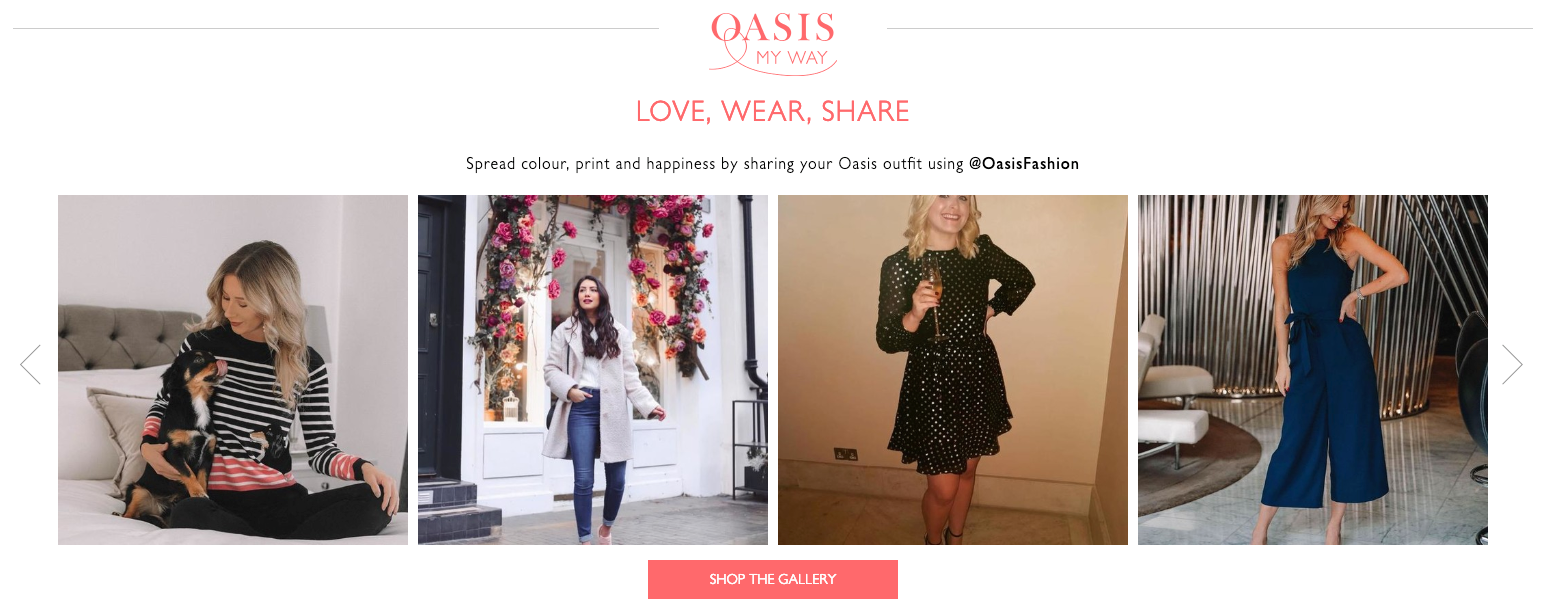
Even from the standpoint of social commerce, Oasis’ Instagram presence is impressive.
They have a direct connection from their Instagram profile to their mobile-optimized Instagram store:
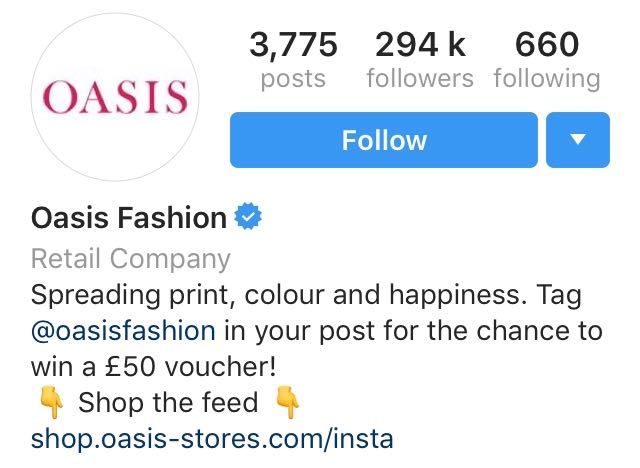
Instagram’s feed is then jam-packed with tagged items you can buy directly on the app:
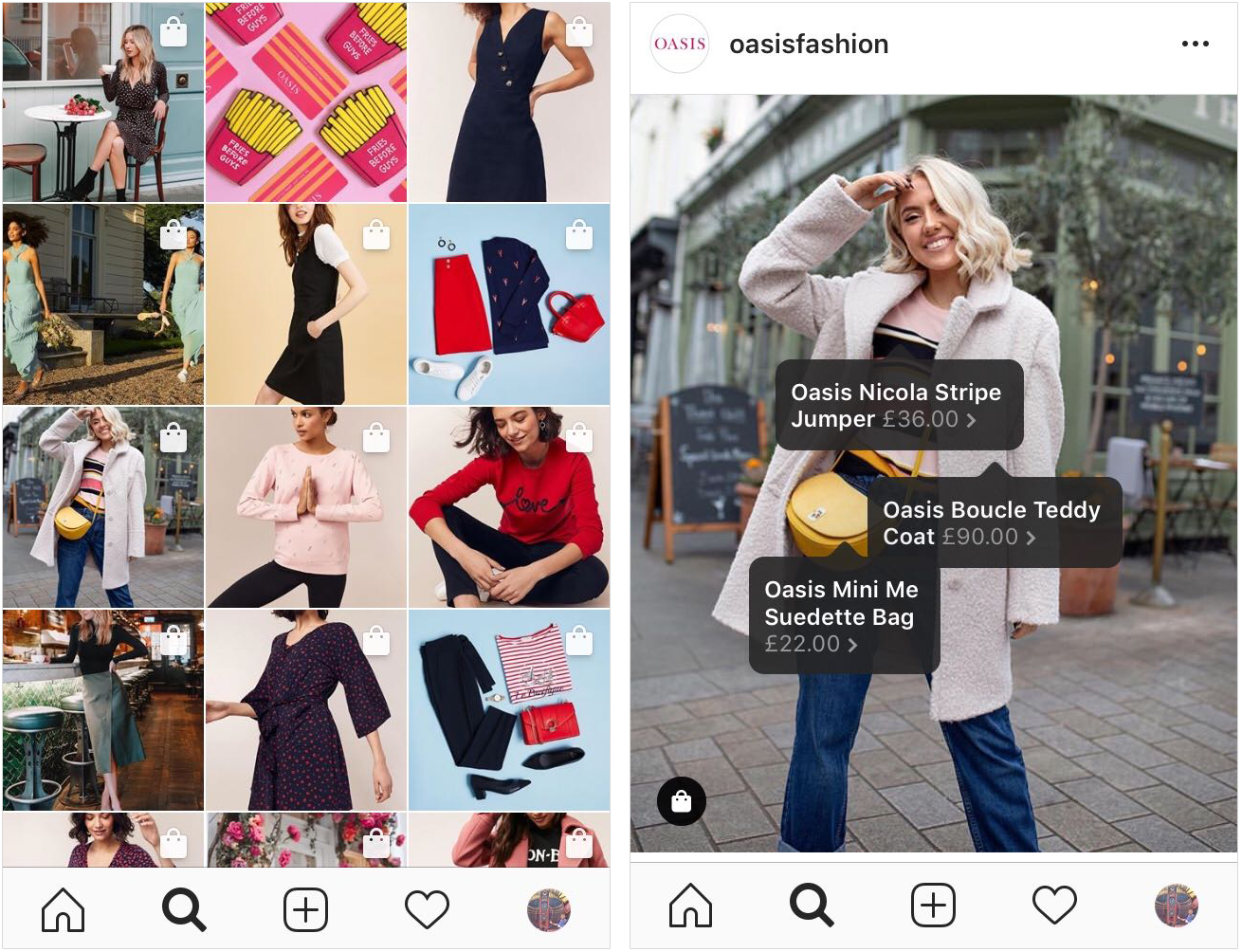
To further promote their mobile app, there are even permanent Instagram Stories devoted to certain collections.
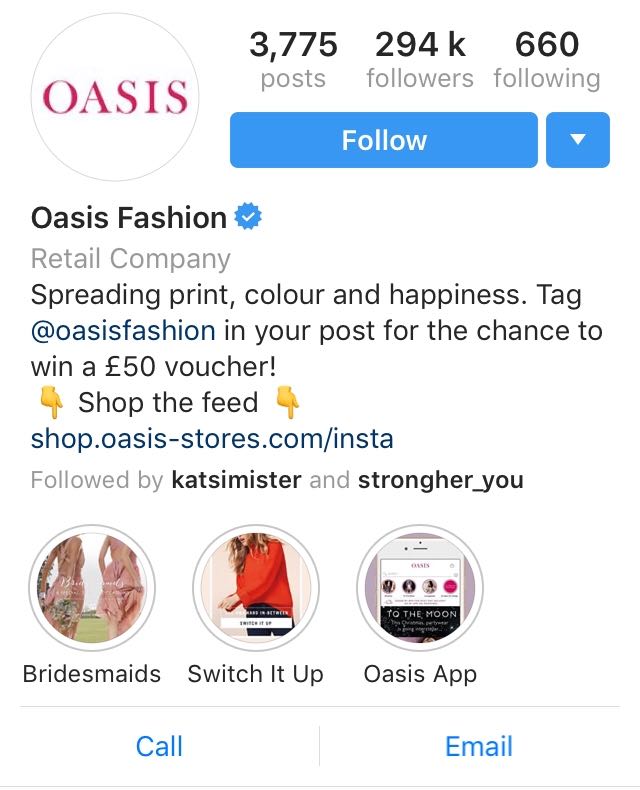
What’s the coolest thing about it all?
The opposite is also true. It’s an app that lets you discover the newest trends and ideas through a feature called ‘Stories.’
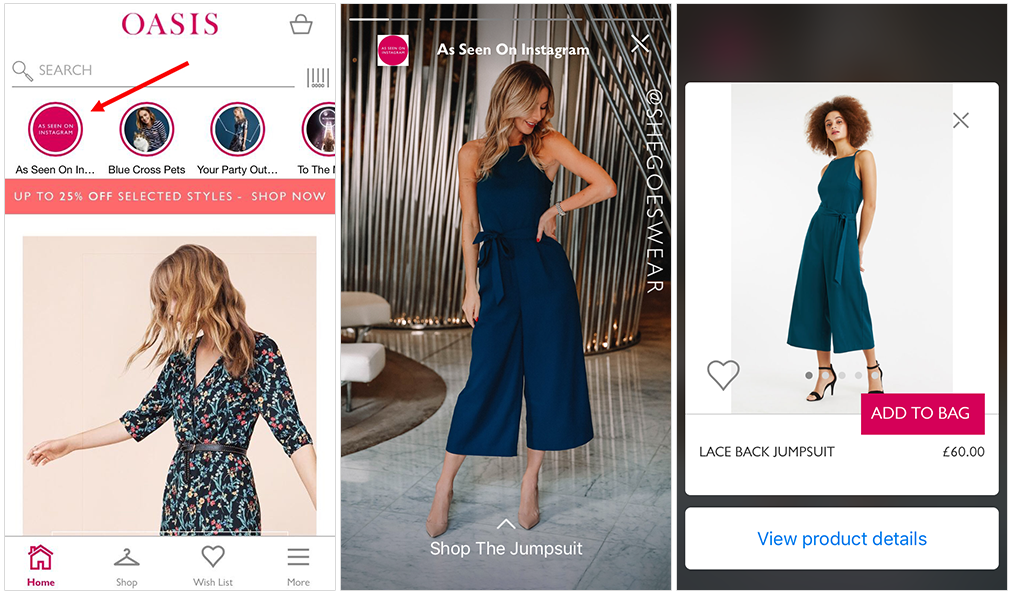
If you save this to your bag, it will be there for you when you return to the desktop site and log in again:
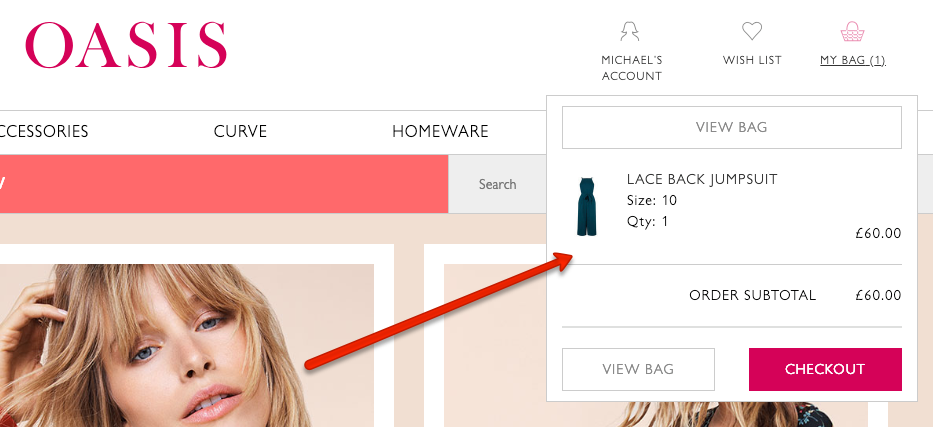
As with online, offline is seamlessly interwoven.
IPad-clad salespeople are waiting to welcome you when you enter a real store. To assist consumers in real-time, these agents are ready to provide style advice and the product information based on the customer’s previous web browsing and stored goods.
Using an iPad to pay means you won’t have to wait in line at the checkout, which further enhances your shopping experience.
These omnichannel examples make good use of Oasis’ fulfillment possibilities.
They provide several delivery alternatives to customers’ homes. On one webpage, everything is detailed in detail:
Customers who choose to subscribe to Oasis Unlimited become members of a premium membership club. Giving them a £9.99 yearly subscription that includes unlimited free delivery:
If you use the Oasis ‘Find in Store’ option, you can even find the store closest to you that carries a specific product:
Customers may purchase online and pick up their items the next day if they are in stock at the location where they ordered from.
Using your iPad, an in-store employee may order items that aren’t currently in stock and have them delivered right to your door.
All of this flawlessly unifies and integrates the fulfillment experience from online to offline.
When it comes to embracing Oasis, it’s down to basics. In the fashion business, knowing this is an important aspect of the e-commerce experience.
When you’re trying to convince potential consumers they can buy with confidence, you should employ wording nearly encouraging returns.
It is therefore a piece of cake for the customer to go forward and issue a refund.
Offering a wide range of alternatives to their consumers, including home pickup and shop return:
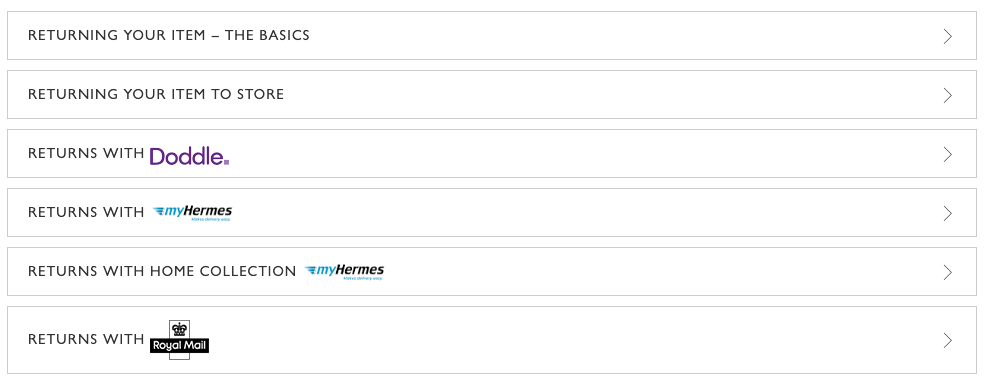
It makes no difference if you bought your goods in a store, online, via a smartphone app, or on social media. Returns can still be made through whichever method is most convenient for the customer.
The Results:
- Since becoming a failing High Street store, Oasis has successfully transformed into an omnichannel powerhouse.
- Given the recent spate of retail bankruptcies, this is all the more impressive.
- In February 2015, they announced that they’d made a profit for the very first time in four years thanks to a reworked approach.
- 2019 saw a recurrence of a little downturn. The Oasis application and integrated online interaction have been credited with a 48 percent increase in group profit, according to the most recent reports.
Key Takeaway:
- Rather than just declaring, “we offer a personal shopping service,” the company’s personal shopping part is divided into occasions and each occasion is assigned a time. This allows clients to explore the section more thoroughly.
- Oasis actively promotes site exploration on its social media accounts as well. The usage of product item identifiers encourages users to learn more about individual products. Creating an outfit on Instagram, for example, encourages buyers to consider purchasing an entire outfit rather than a single product; in other words, they are selling a fashion.
BarkShop

The Strategy:
There are a lot of dog-related items and treats available at BarkShop, an online shop.
As a result, they’re an excellent illustration of how a well-informed internet business can successfully enter the omnichannel world without having any permanent retail stores themselves.
BarkShop’s customer interaction points may be less than Oasis’s. Even so, they’re an excellent example of an omnichannel store because they can be found wherever their consumers are.
Alternatively, put:
They’re well-informed since they’ve done their homework. Becoming aware of where their consumers would like to purchase from them.
To begin, BarkShop has focused on one specific trend:
Customers that shop at this establishment are dog lovers. Photographs of dogs are popular among dog owners as well.
As a result, they engage in a vigorous Instagram contest. Adding a slew of high-quality images of beautiful dogs to your followers’ feeds:
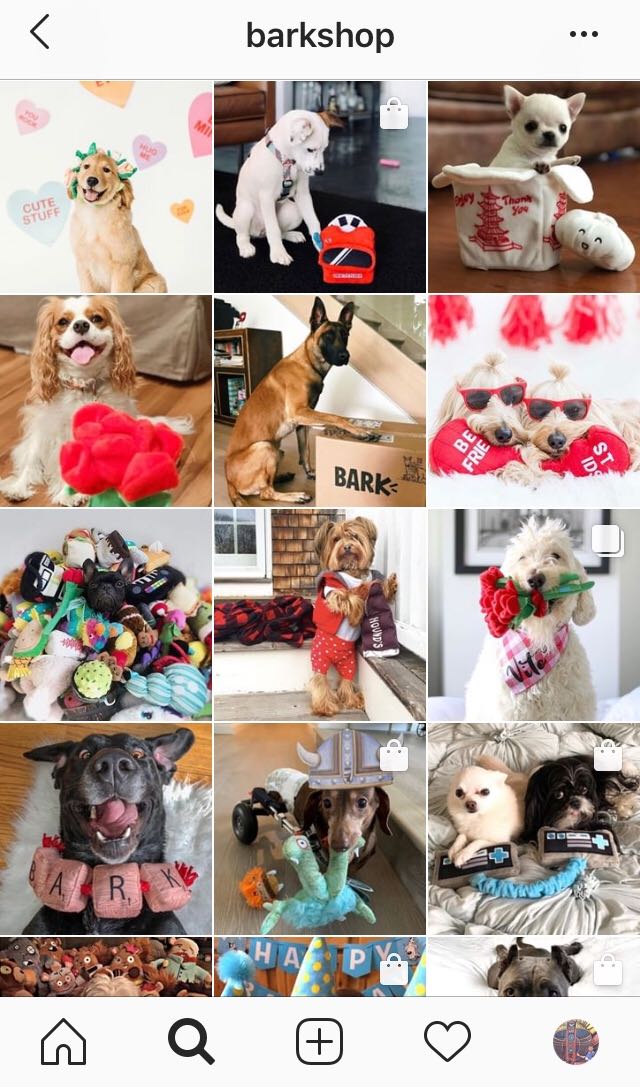
However, they also include several images of dogs posing with merchandise from the BarkShop online store.
In addition to all that, these articles may be purchased straight from the site:
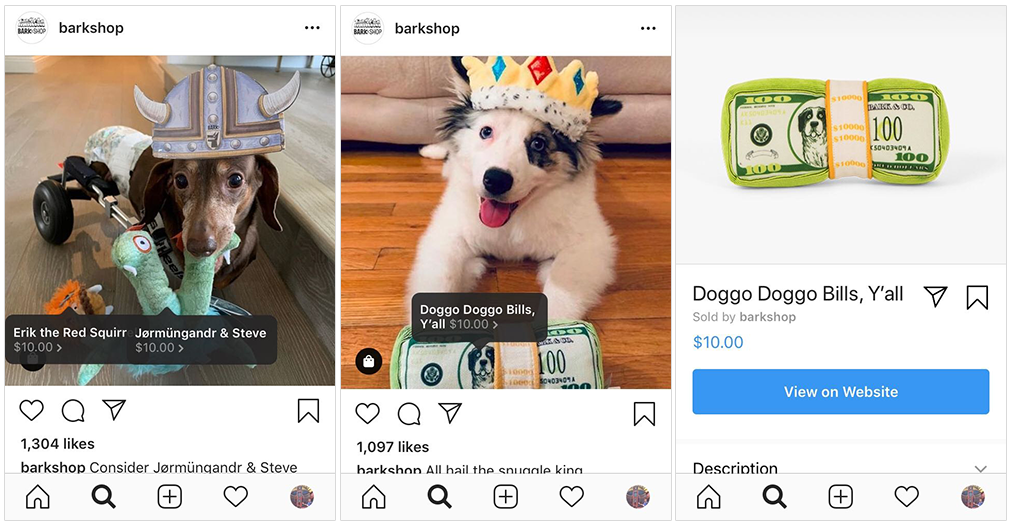
Even after that, they use Pinterest, a visual social commerce site, to implement the same strategy.
The creation of a wide range of boards to pique people’s attention.
BarkShop Live, on the other hand, exemplifies omnichannel marketing at its finest.
BarkShop is taking its fantastic online brand to reality with this new concept store in New York City. Pop-up stores are a more cost-effective way to achieve this than making the big effort to open permanent physical locations.
That being said, this isn’t just any pop-up shop.
Customer experience is seamless because of BarkShop Live’s seamless integration of the online and offline worlds.

As a result, BarkShop’s items are put to the test by actual dogs.
An in-app listing of their dog’s favorite products is then provided to owners.
Take a peek at the following video to see the entire process in action:
All of BarkShop’s goods are fulfilled using the standard e-commerce home delivery fulfillment process.
It’s interesting to note, though, that the company’s initial product, BarkBox, was the inspiration for the new shop.
BarkBox capitalizes on the profitable subscription fulfillment model by recognizing two key factors:
- People wanted to spend money on their dogs regularly.
- They didn’t want to have to spend time on a website every month looking up what their dog would enjoy eating.
To put it simply, buyers may sign up for a monthly subscription that includes a package loaded with dog goodies and toys.
Important to note here is that BarkShop has figured out how to appeal to its target demographic through an omnichannel strategy.
- Barkshop is a big fan of dog photographs, so they’re on Instagram in droves.
- As a result, Bark created BarkShop Live so that dogs may check out the items before they buy them.
- They created the BarkBox subscription because they wanted to be able to buy dog treats regularly without having to deal with the bother.
The Results:
- Bark turned a profit in Q1 2017 and ended the year with $150 million in sales, according to an InternetRetailer analysis. This amount is expected to reach $250 million by the year 2018.
- According to them, the BarkBox subscription service has a retention rate of over 95%.
Key Takeaway:
- They’re making sure they’re providing value to their customers by curating a feed of shoppable dog posts. Simply adorable photos of their products showcase them in their finest light, with no hard push.
- They have BarkShop Live on top of this socially conscious exhibition. Customers may look around and make purchases at this temporary retail location. They also save money by not having a fixed location.
- If you don’t know your client base well, you can’t be confident you’re at the right place at the right time.
Neiman Marcus

The Strategy:
In addition to clothing and accessories, Neiman Marcus also sells beauty products, jewelry, and purses.
In other words, they’re a great example of a pioneering omnichannel retailer, pushing the industry forward with innovative, new methods to link the online and offline experiences.
Touchpoints are handled by Neiman Marcus in the same manner as they are by any of our prior omnichannel case studies. Taking actions like as:
- A top-notch online store.
- A chain of retail establishments spread out over the United States.
- Dedicated mobile app for Android and iOS devices.
- One million people are following this shoppable Instagram.
- Pinterest that you can buy things from, with over 10 million unique visitors per month.
Facebook Ads are another area where they excel. Using eye-catching carousel advertisements to display relevant fashions:
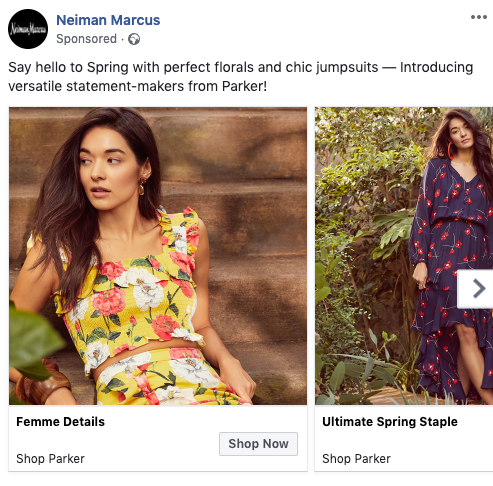
Facebook retargeting is another option, and it’s quite precise. A properly matched ad showcasing another carousel of items relevant to you will greet you when you visit their site to look for fancy dress shoes.
The same is true while looking at bedroom accessories.
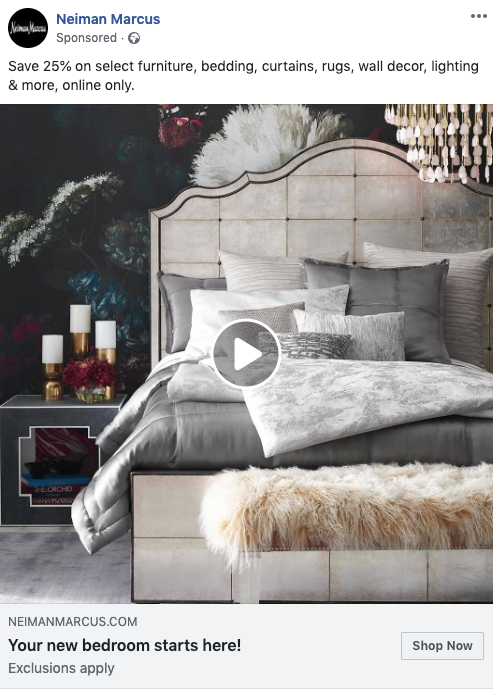
However, the most interesting aspect of Neiman Marcus’ omnichannel approach is how they employ technology to connect online and offline.
The innovative ‘Memory Mirror,’ available only at a few chosen locations in the US, will be available for you to try out.
This is, in essence, a mirror equipped with a camera. enabling clients to:
- See how different clothes look in 3D as well as from different perspectives.
- Keep old clothes for them to refer to in the future.
- Use social media to post and share 3D photos of them looking their best in certain attire.
Watch this CBS This Morning segment to see how it all comes together:
Customers can, therefore:
- In-store, try on a variety of clothes.
- Memory Mirror videos may be saved within the NM app.
- Consult with others on what you learned.
- Later, they may go back and re-read their favorites.
- Purchases may be made using the app or online.
- All of this contributes to a more pleasurable user experience across online and offline mediums.
In addition to that:
There is also a ‘Snap. Find. Shop.’ option in the Neiman Marcus app. Customers will be able to:
- See a pair of shoes or a purse they like in person.
- Use the NM app to take a photo of it.
- Get a list of Neiman Marcus goods that are comparable.
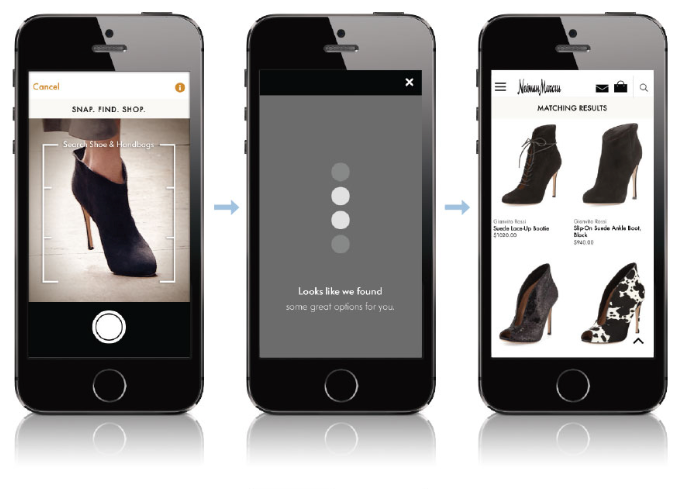
Neiman Marcus’ flawless integration of the offline and online retail experiences is yet another great omnichannel example.
The Results:
- According to recent statistics, Neiman Marcus had a significant revenue increase in 2018 following two years of sales decline. Ecommerce sales are on the rise, which bodes well for the future.
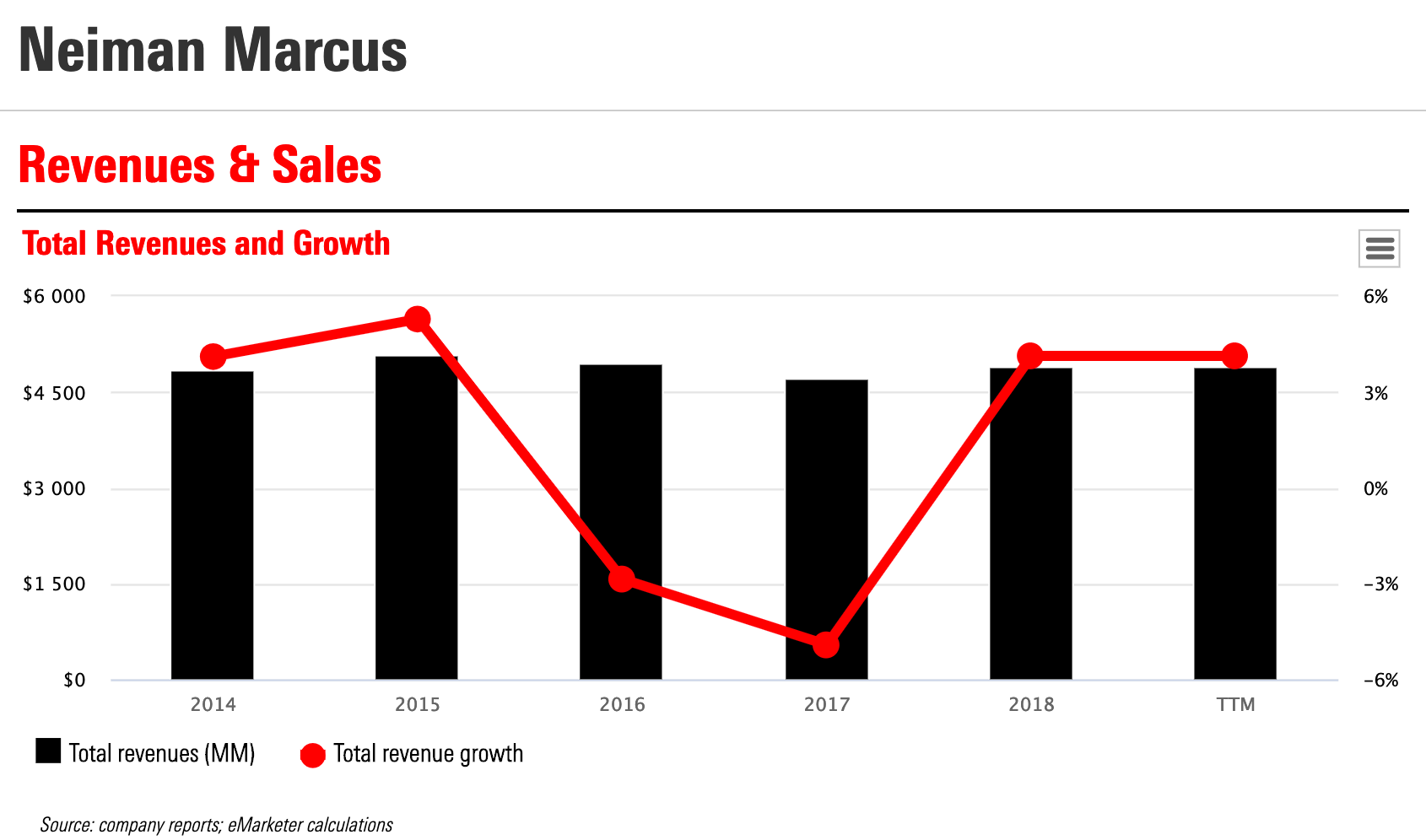
- This is, without a doubt, the outcome of their successful integration of traditional and internet platforms.
- Recent revenue increase has been attributed in part to improvements in the customer experience. Geoffrey van Raemdonck, CEO of NM, claims that the company’s “plan is succeeding”.
Key Takeaway:
- They integrate offline and online data on-site as well with the help of solutions like the Memory Mirror. Customers may make 360-degree recordings of themselves putting on outfits using this technology and store them in the mobile app later. To assist people to decide whether or not to purchase a product, the virtual fitting room is available.
Starbucks
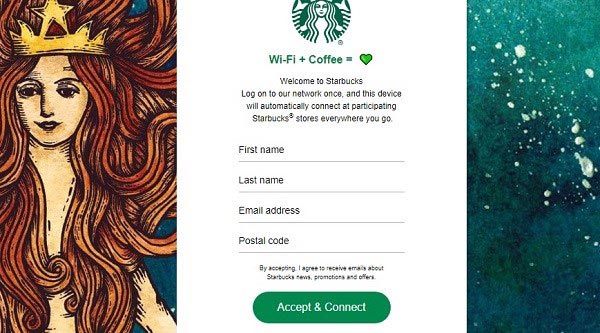
The Strategy:
In the year 2018, there was an issue with Starbucks.
Starbucks Rewards was only used by their most dedicated consumers, leaving 60 million people a month with no digital connection to the company.
Once these consumers were located, the foundation for extending Starbucks’ omnichannel retailing approach was laid by developing an online relationship with them.
In March of this year, the business decided to stop offering free wi-fi.
Customers had to first subscribe with an email account before they could use the internet. To put it another way, they compelled a digital connection with clients by offering free wi-fi in return for permission to contact them through a new channel (email).
While this may seem like a confusing term to some, it refers to consumers who have entered their email addresses but have not yet signed up for Starbucks Rewards (SR).
Loyalty may be rewarded with exclusive deals and experiences. Starbucks’ triggered email marketing shows us the idea in action. Customers who want to take advantage of several promotions must first sign up for Starbucks Rewards. Here’s an excellent illustration of what I mean.
According to the advertisement, “Ordering a handmade beverage (grande or bigger) in advance using the Starbucks Rewards app gives members a voucher good for a free drink between March 10 and March 12. To take advantage of this deal, join Starbucks Rewards.”
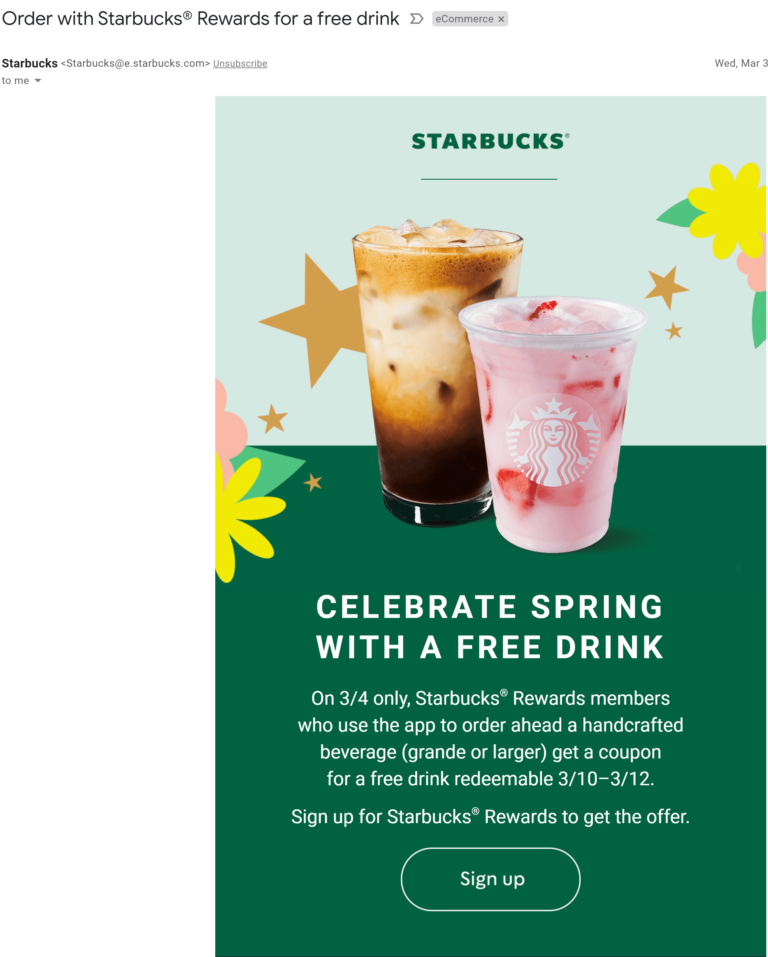
Starbucks wants its consumers to do several certain behaviors, all of which are incorporated within the deal.
- Become a member of the Rewards Program.
- To take advantage of their click and collect method, use the Starbucks app to place your order ahead of time
- Redeem within a week to aid in the consolidation of
Starbucks rewards members with more than just exclusive deals. Frequently, they build whole experiences around which their client base may participate.
Here’s an illustration of one of their annual events: “Starbucks for Life.” Members of the rewards program can earn game pieces by buying specific goods. Starbucks for Life is a gift card worth $500, but there are also Bose Earbuds and $500 gift cards available.
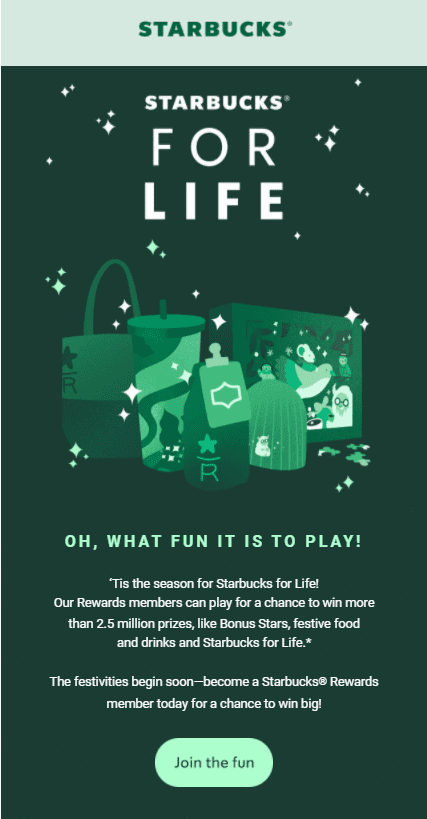
Omnichannel commerce relies on widespread channel usage. It’s well worth encouraging in whatever way you can.
The strategy employed by Starbucks is straightforward. In the first place, figure out where your customers are most likely to interact with you, and then provide an incentive for them to do so by providing a clear advantage at that time.
When it came to this company, they had 28,000 physical locations with 75 million monthly consumers. They found a crucial advantage and used email to create new client connections based on that benefit.
For many eCommerce businesses, the web is their primary method of connecting with customers (their site).
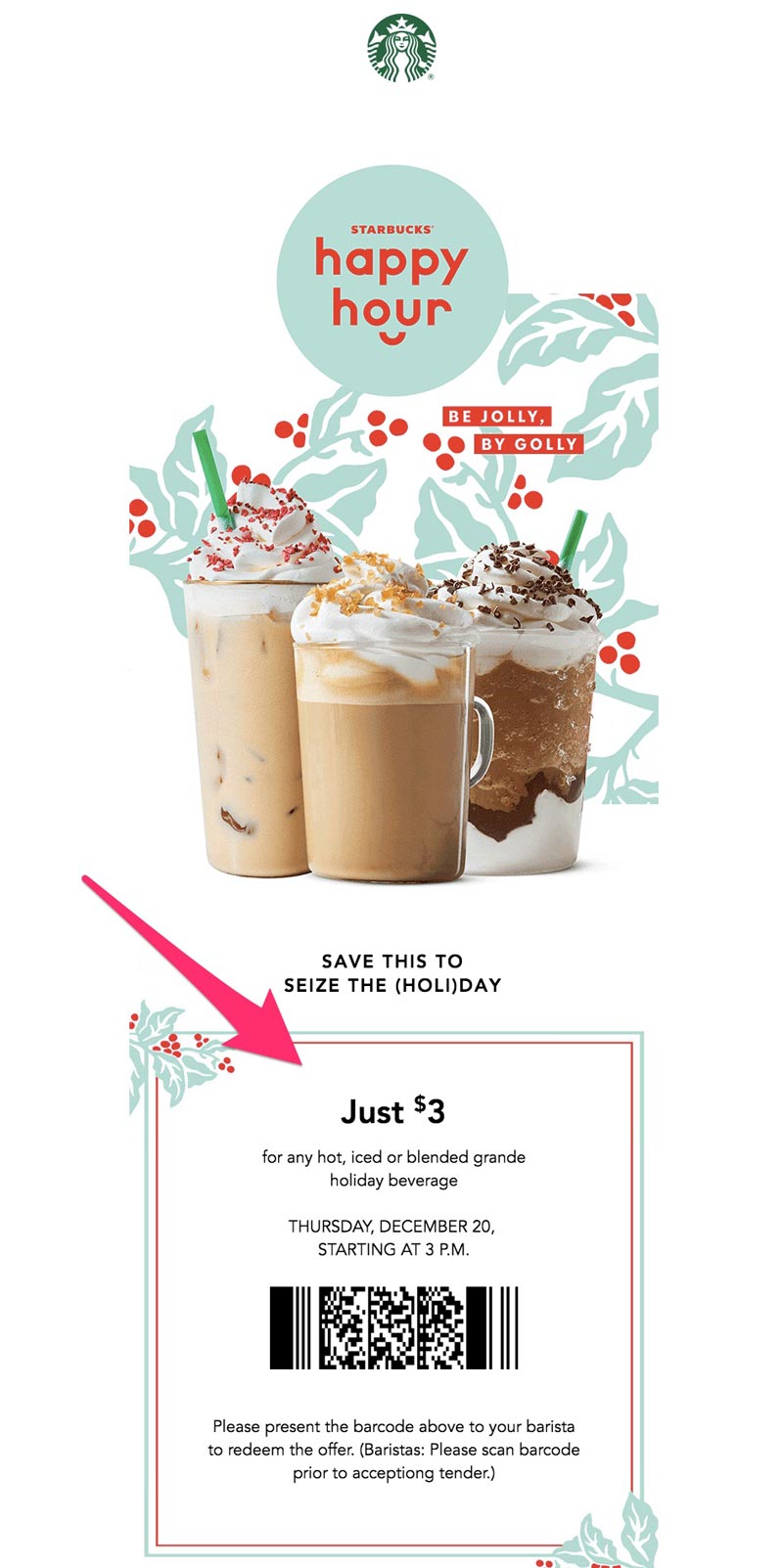
When it comes to Starbucks’ omnichannel commerce approach, email is only the beginning. The digital channel is the company’s first, but it won’t be the last it launches.
Getting consumers to sign up for the Starbucks Rewards program is the ultimate aim of the digitally registered Starbucks customers initiative.
The Results:
- Starbucks has demonstrated that they understand their consumers’ demands by developing a compelling mobile retail experience and streamlining the payment processing for their on-the-go client base. This is something you should focus on while experimenting with mobile advertising.
- While not a novel concept, Starbucks has eliminated the need for stamp cards for their mobile users by seamlessly integrating a rewards program into their Starbucks mobile application.
- As a result, their consumers are more willing to keep making purchases to receive free prizes if they are encouraged to do so by their mobile program. Thus, Starbucks can collect more information on its clientele.
- Customers who are more involved with Starbucks are also enticed to participate in surveys in exchange for stars, which they are glad to do since it puts them one step closer to obtaining a reward. When you’re trying to learn more about your customers through mobile marketing, keep this in mind.
Key Takeaway:
- An excellent case study of how to strengthen customer connections and promote repeat purchases is Starbucks’ omnichannel approach. Their omnichannel commerce success serves as a roadmap for other companies looking to implement similar strategies.
Burberry

The Strategy:
Luxurious clothing label Buberry makes its products. There were a lot of firsts this year for Burberry in retail, including many omnichannel retailing initiatives.
They teamed up with Instagram to introduce the world to Instagram Checkout. WeChat users may now purchase items from their full inventory for the first time, thanks to this company.
However, the invention of their first socially native product line, dubbed “B Series,” was the most intriguing part.
Burberry has a good grasp of the luxury market as a whole, as well as a clear sense of who they are and the direction they want to move in, in the near future.
Mckinsey & Company conducted research and found that “By 2025, we project that luxury goods sales would have more than tripled, to reach over $74 billion in value. As a result, online sales of personal luxury goods will account for roughly one-fifth of total sales.”
Burberry competes in the luxury sector because of the growing number of young customers. They’re well aware of this fact as well.
Burberry has prioritized appealing to youthful customers, which has influenced both the products and the distribution methods they use.
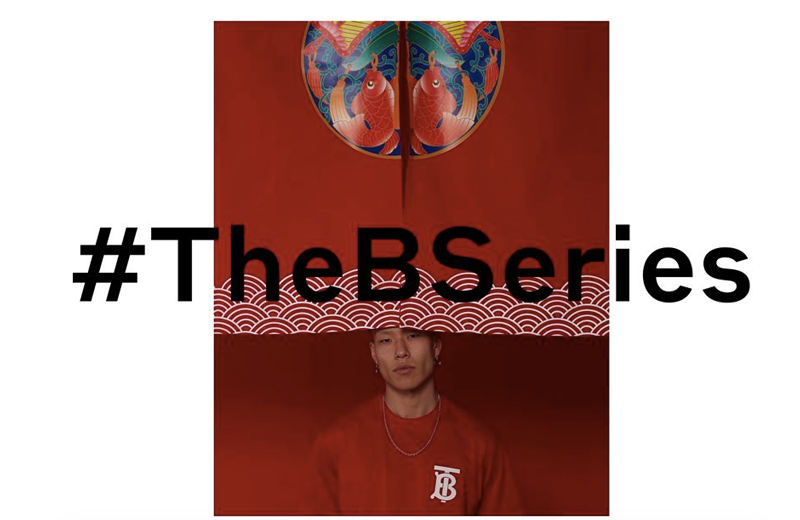
More outlets than ever before are being used by customers. This is also valid for Burberry’s particular market segment. According to the same Mckinsey & Company study, the number of contact touchpoints in the consumer journey is only going to grow.
Burberry determined that social media was the most effective way to reach their Generation Z target audience.
Geographical differences influence the relative prominence of social media outlets. Because Burberry is a worldwide brand, they focused their efforts on the most popular social media platforms in each target nation, such as Instagram and WeChat.
When it comes to photo-sharing apps, Instagram is the most popular in the U. S. According to Business Insider, 65 percent of Generation Z uses Instagram every day.
Burberry was able to establish a complete omnichannel retailing strategy after selecting its channel.
Series B is a new product range from Burberry. There is only a single 24-hour window each month on the 17th when you may purchase the series’ items. These products are exclusively available on social media platforms such as Instagram.
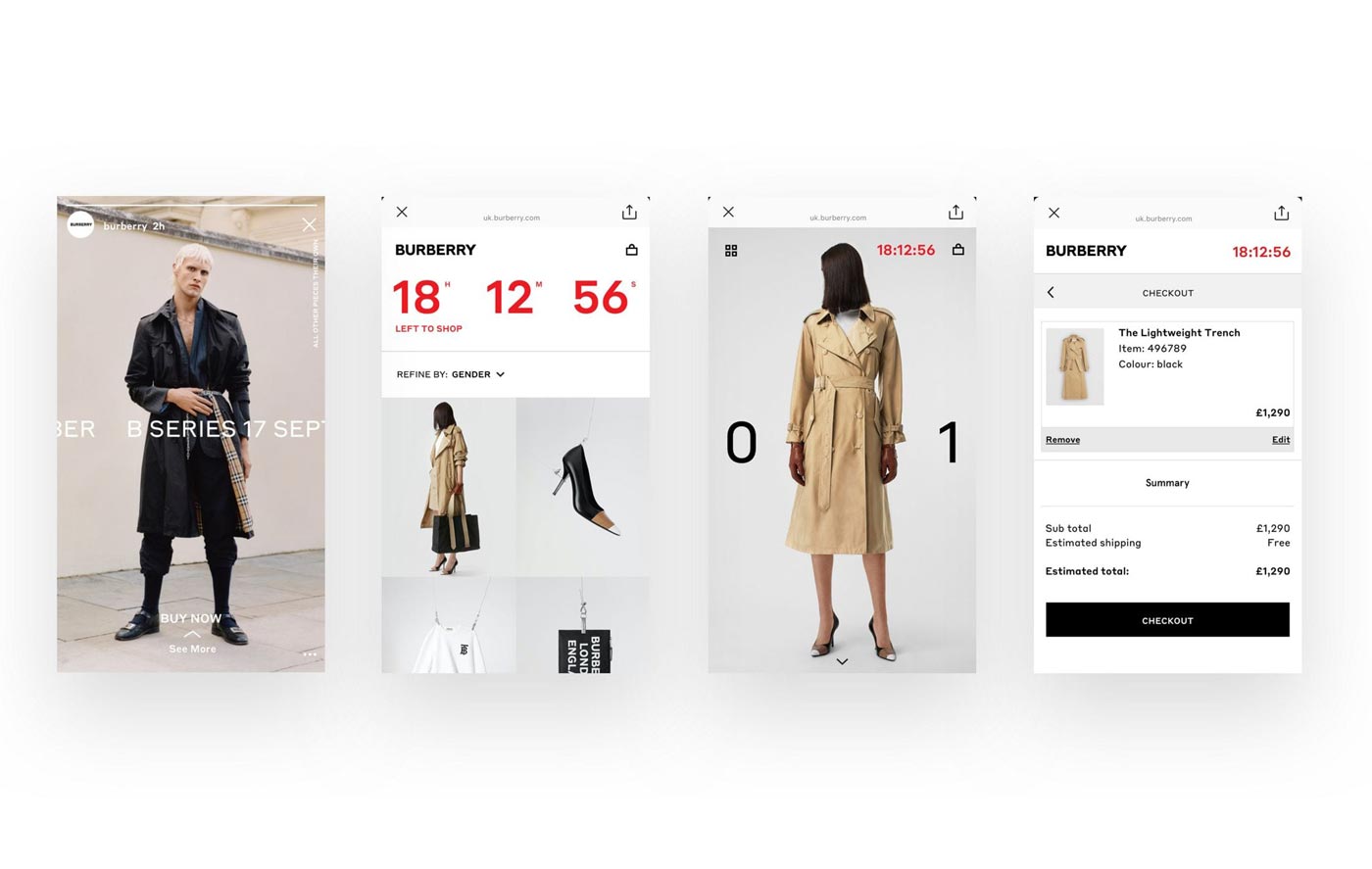
The limited-edition goods sparked interest and excitement among the company’s target market. It’s common for streetwear labels to have 24-hour “drops,” but it’s uncommon in the luxury industry.
The Results:
- As a result of the campaign’s serial structure and channel exclusivity, consumers were more invested in the brand and developed a sense of expectation.
- Thanks to B Series’s popularity, we now have the opportunity to engage with our audience on a much deeper level through various events across numerous platforms.
- They teamed up with Instagram to introduce the world to Instagram Checkout. WeChat users may now purchase items from their full inventory for the first time, thanks to this company.
Key Takeaway:
- To develop a successful omnichannel commerce strategy, you must first understand your target audience.
- Customers are interacting with brands through more avenues than ever before.
- The fact is that the premium client is a digitally savvy customer who prefers to shop online.
- Today, “digitally influenced” luxury buyers account for 70% of all luxury shoppers.
- The exclusivity of the channels contributed to increased brand interaction, which was further aided by the campaign’s serial structure, which fosters ongoing connections and builds expectation.
- The purchasing habits of consumers are shifting. Exploring online and purchasing offline, in-store mobile queries and market analysis, social network shopping, user-generated information, and cross-device shopping are all examples of new consumer habits to watch out for.
Amazon

The Strategy:
Customer-centricity is at the heart of Amazon’s declared goal. Reaching consumers where they are is an important part of this strategy. Expanding their channels and creating an omnichannel experience are key goals for Amazon.
Their omnichannel strategy is a perfect case study. Amazon’s omnichannel success is built on the foundation of two principles.
First and first, Amazon is concerned about the customer’s satisfaction. The data they collect is used to personalize and respond to their consumers’ needs across all channels.
Second, they concentrate on the integration of the backend of their channels. This goes above and beyond simple inventory management and order fulfillment at the central office. In addition, it entails linking consumer data and satisfying customers’ needs via the channel of their choice.
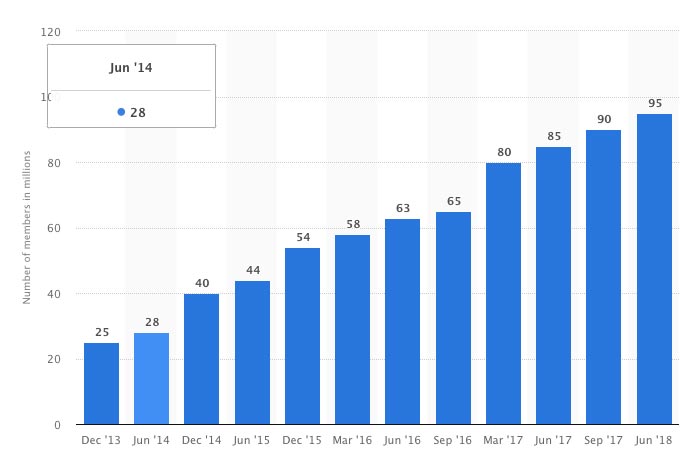
Amazon has mastered the art of package deals. Amazon Prime is at the heart of the Amazon ecosphere (at least from the B2C perspective).
Amazon Prime appears to be a bargain membership store like Walmart or Sam’s Club on the surface. You’ll reap the rewards if you make a financial commitment to the membership.
One of the major benefits of Amazon Prime membership is free (and increasingly speedy) shipping.
Prime is a no-fuss, no-hassle service. It removes the most common cause of cart abandonment (expensive shipping) and encourages customers to stay around. Amazon is typically the first and only stop for Prime subscribers when they go shopping.
Additional incentives have been placed on top of Amazon Prime membership to encourage usage. In the year 2019, the advantages go well beyond shipping.
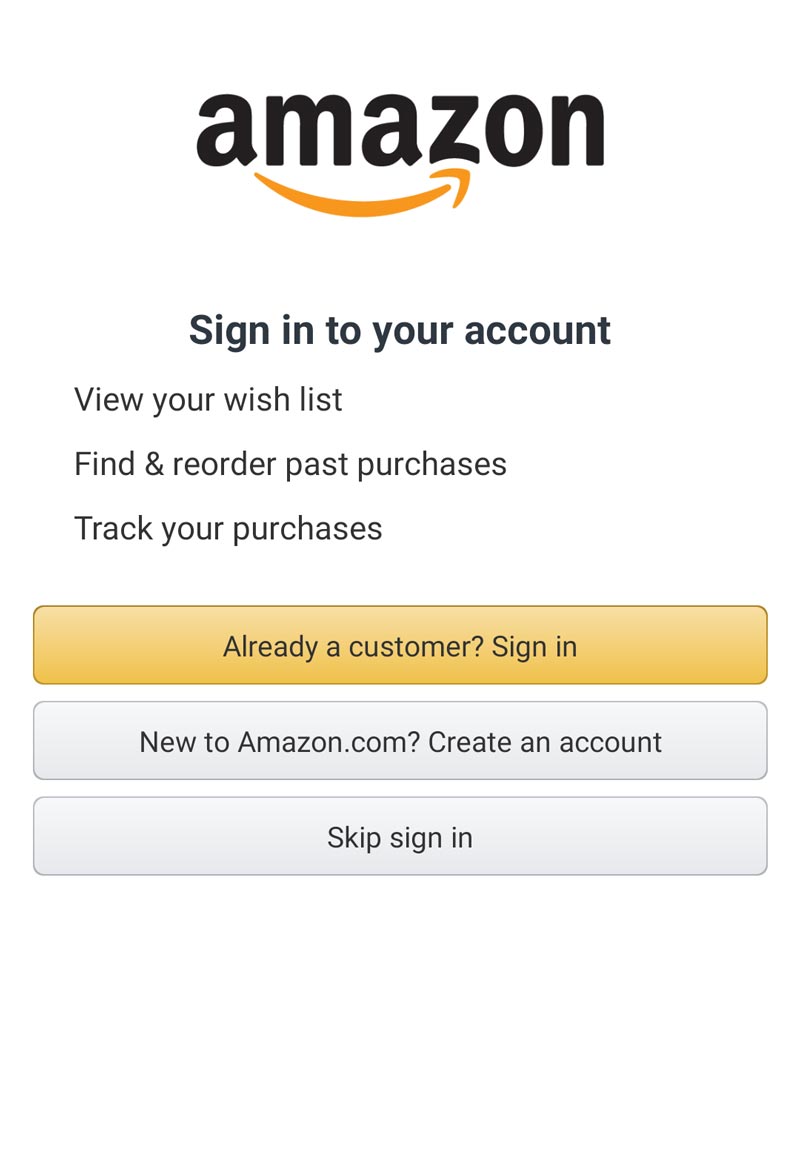
An overview of Prime Membership advantages may be found here, but these are only some of the many perks you’ll get when you join.
- Access to thousands of movies and TV shows with a free Prime Video subscription.
- You can get discounts on everything from premium streaming services like HBO and Starz to grocery store chains like Whole Foods.
- Free Prime Music Membership: Prime members have unlimited access to Amazon’s 2 million-song music library for free streaming and download.
- Using Prime Wardrobe before making an online purchase ensures that the item fits properly before you buy it.
And so it goes.
For Amazon, data unification is critical to a successful omnichannel strategy, which is why Prime Membership comes with so many perks. With it, Amazon can better analyze consumer preferences, power their lauded recommendations, and provide a unified user experience across devices.
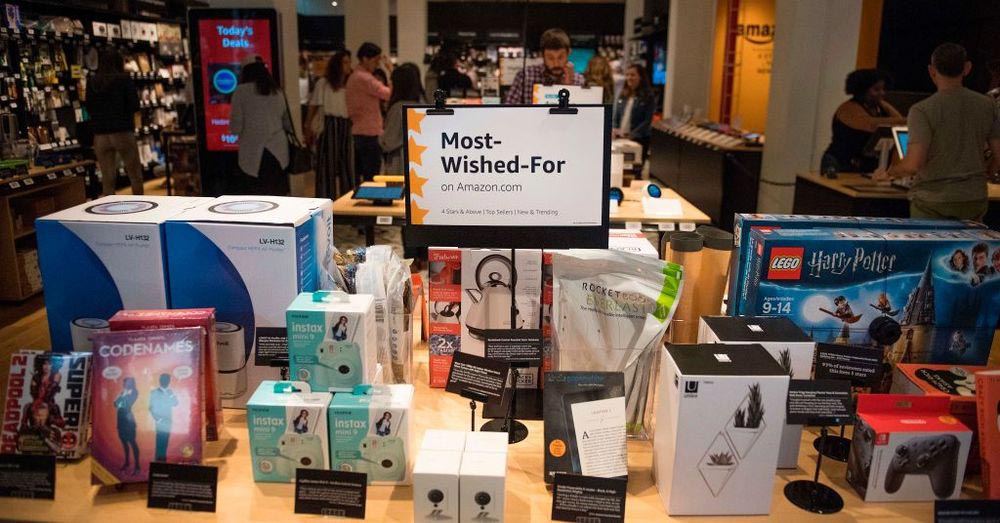
Just glance at the first display you see when you open the Amazon app on your smartphone or tablet. Authenticating your identity on Amazon is the first step. Once you’ve done that, you can continue building out your customer profile.
Direct relations with clients in each channel are difficult to establish (and even more difficult to maintain). The Echo is an outstanding textbook case on how to develop a strong foothold in a sales channel due to Amazon’s aggressive approach to various channels in various ways.
A new way to interact with Amazon was made available with the Echo speaker range.
Alexa’s capabilities have grown in two ways since they were introduced by Amazon. To begin, they made it possible for third-party hardware manufacturers to incorporate Alexa skills into their products. Second, Amazon made a significant investment in various packaging formats.
From smart bulbs to screens to smart plugs, Amazon sells a wide range of products, all of which use Alexa as a key differentiator.
It’s far more likely that customers will add more products to their smart home automation system once Alexa is the default smart speaker in the house. Additionally, when new products are released, the value of the Alexa system grows for the customer.
Amazon also benefits because having Alexa as the hub of your home makes buying from Amazon more convenient, increasing your customer lifetime value (LTV) when you buy an Alexa-based system.
The ease with which data may be collected thanks to e-commerce is remarkable. When it comes to brick-and-mortar stores, Amazon uses compiled data in a variety of ways.
Despite its name, Amazon is so much more than a website you can shop from. They now have 512 physical locations, and they want to continue expanding rapidly.
Multi-channel retail is, in fact, the way of the future for retail. Online shopping isn’t the only way customers make purchases. They also don’t only buy things from the store. They carry out both tasks. And a strong footing in both worlds is required for a successful omnichannel strategy centered on the user experience and convenience.
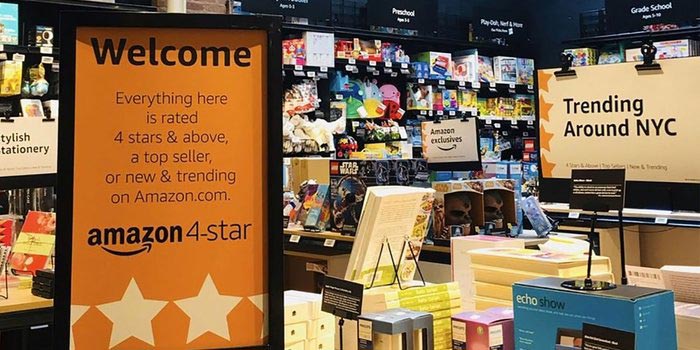
The 4-Star concept is one of my favorite examples of how Amazon utilizes internet data for physical use. The shop serves as a physical extension of Amazon.com, including personalized displays created completely from user preferences and purchasing history.
The Results:
- Simply put, Amazon Prime is the ideal reason to sign up for an account and stay logged in, regardless of where you are or what device you are using.
- Currently, Amazon Prime has 95 million subscribers. Despite pricing hikes from $99/year in 2014 to $119/year in 2018, this remains the case.
- By launching the Echo in 2015 and integrating it with Alexa, Amazon created the market for “smart speakers.” Today, they still hold a commanding lead in the market, outpacing Google Nest by almost 2.5 times and Apple’s HomePod by roughly 10 times.
- Thanks to its Echo-like smart speakers, Amazon gained direct access to consumers in a way that was not possible before.
- Today, customers can simply ask Alexa to buy everything from toilet rolls to headphones. It also serves as a conduit for Amazon-owned services such as Audible and Amazon Music, among others.
Key Takeaway:
- In every omnichannel approach, connecting user data throughout channels and devices is the first hurdle to be overcome. The typical consumer data siloing practice is to separate information about behavior, prior purchases, demographics, product/category preferences, and more.
- There’s a good chance that your shop currently offers a way for customers to sign up for an account. The problem is that accounts are often regarded as a nuisance by retailers. Creating an account is the second most common cause for customers to abandon their shopping carts.
- Think about how you might provide incentives for your client base to establish and actively utilize their accounts for your business. Focusing on convenience, delivery, or other direct perks like Prime Video might help you emulate Amazon’s approach to selling online.
- It’s safe to say that voice is becoming an increasingly essential business medium. According to ComScore, voice searches will account for 50% of all Google search queries by 2022. Furthermore, according to Statista, the number of digital virtual assistants will reach 8.4 billion by 2024. Also, more and more people are making purchases via speaking.
- According to OC&C Strategy, almost $2 billion in voice sales were conducted in February of 2018. However, by 2020, revenues are expected to reach $40 billion.
- The most important thing to remember is to have a direct line of communication with your consumers. In other words, creating a completely new product category isn’t necessary.
- Identify new ways to engage your consumers and develop new touchpoints with them. Is there an ongoing, direct connection? Have the ability to educate and motivate clients both new and old.
- What do you do next after you’ve established a channel? Beyond the initial point of contact, your omnichannel approach must be comprehensive. The Echo served as a kind of beachhead for Amazon. It gave Amazon the opportunity to not only sell via speech but also to develop a new product category in which they could take the lead.
An effective omnichannel strategy ties together physical and online distribution methods successfully.
Final Thoughts
Although omnichannel marketing is new, it already has a successful track record. These companies have nailed the craft, and it shows in the growth of their businesses. Because there is still so much to discover, the possibilities are virtually endless. Isn’t it time you investigated what omnichannel can accomplish for your business?
